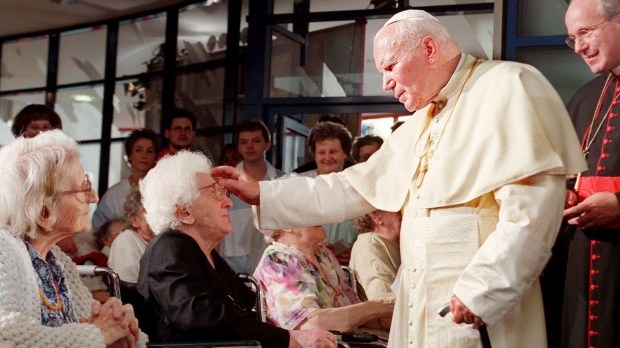The sick and the suffering always had a special place in the heart of St. John Paul II. Even early on in his priestly ministry, he would frequently visit nursing homes and hospitals, always asking for their prayers.
While pope, John Paul II instituted the “World Day of the Sick,” to be celebrated annually on February 11, the feast of Our Lady of Lourdes.
In a letter for that first celebration in 1993, John Paul II explained his hopes for this celebration.
The World Day of the Sick — in its preparation, realization and objectives — is not meant to be reduced to a mere external display centering on certain initiatives, however praiseworthy they may be, but is intended to reach consciences to make them aware of the valuable contribution which human and Christian service to those suffering makes to better understanding among people and, consequently, to building real peace.
He did not want it to be a mere “external” celebration, but to have an “internal” effect, forming the hearts of all to see the inherent dignity of every human person.
It was his intention to “humanize” medicine, reflecting the physical and spiritual aspects of it.
The hopes which are so alive today for a humanization of medicine and health care require a more decisive response. To make health care more humane and adequate it is, however, essential to draw on a transcendent vision of man which stresses the value and sacredness of life in the sick person as the image and child of God. Illness and pain affect every human being: love for the suffering is the sign and measure of the degree of civilization and progress of a people.
As a result, if we want to truly celebrate this day, we need to meditate on how we can treat others with authentic human dignity, and how that can transform the realm of healthcare.

Read more:
3 Feasts in February that honor the sick and suffering

Read more:
A wonderful prayer composed by St. John Paul II for healthcare professionals

